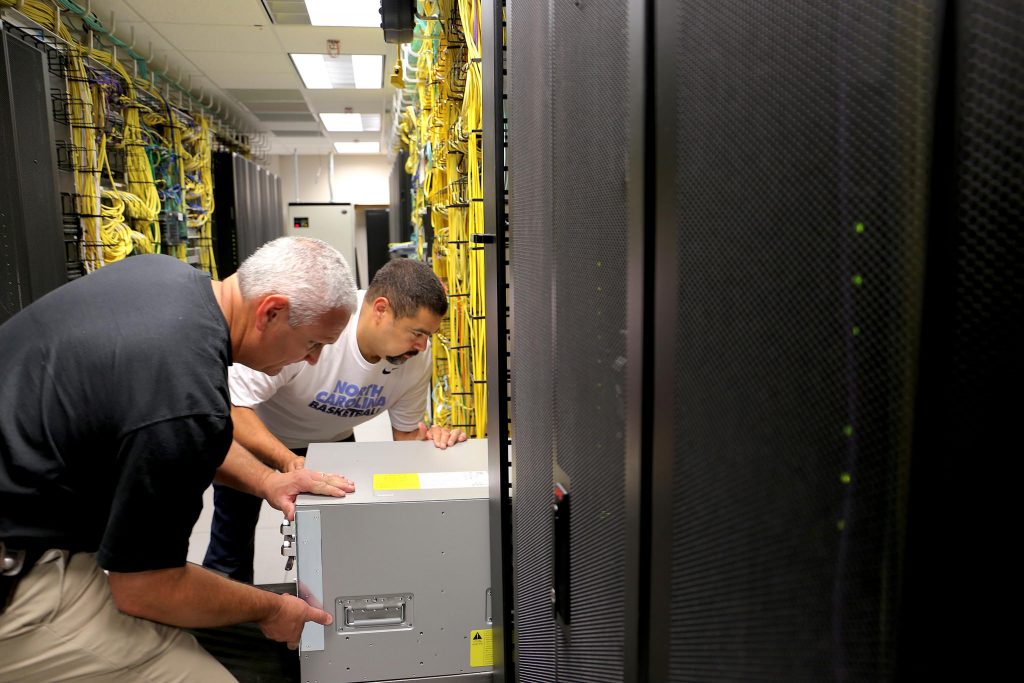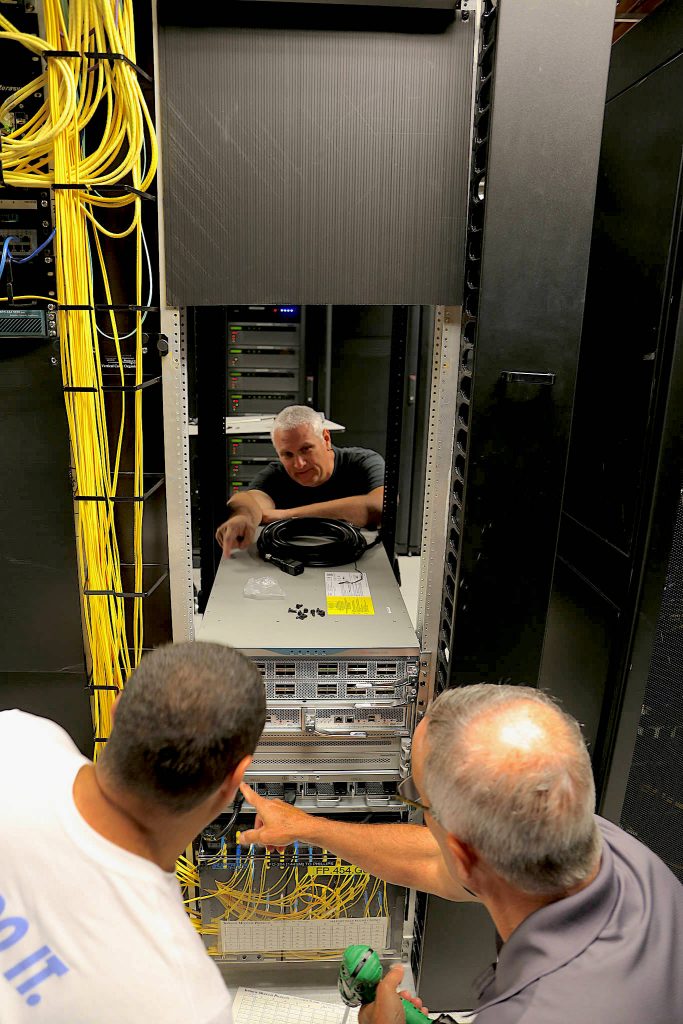
ITS Communication Technologies has begun upgrading the University’s networking core to provide better redundancy, more flexibility and much higher bandwidth.
ITS selected Cisco System as the vendor for the upgraded core routers in May, and started the upgrade in July. The work will be broken into phases over eight months, said Danny Shue, Network Architect with Network Operations, a group within Communication Technologies.
Network Operations will start with the border routers, then residence halls and campus wireless, and eventually upgrade the cores in ITS data centers. The group has completed three different changes so far:
- Moved off-campus traffic from the legacy 6509 border routers to the new virtual border router pair in Phillips Hall and ITS Manning
- Upgraded the residence halls’ router to a pair of new Nexus routers, and connected them to the new core
- Upgraded the campus wireless router to a pair of new Nexus routers, and also connected them to the new core
The purpose of the core is to provide reliable and fast transport for traffic between different parts of campus, such as between classrooms, departments and the data center.
Campus demand has surged
Since 2006, the current network core has provided bandwidth of 20 Gbps (billions of bits per second). Campus demand, however, has escalated with the upsurge in use of mobile devices, video and big-data applications.
The new core will support 160 Gbps bandwidth for future campus network usage growth.
To understand the difference that additional bandwidth can make, one only needs to compare download speeds of a video. Downloading a 5 GB movie over a 20 Gbps link takes 2,000 milliseconds. With the bandwidth capacity of 160 Gbps, the time shrinks to 250 milliseconds.

Upgrade will support larger load
“The campus is always hungry for bandwidth,” Shue said. “We need more high-speed port density at various locations, so having a robust campus core to support this increasing load is essential.”
The network core also needs more flexibility. Currently, it’s difficult to gain visibility for traffic through campus border Intrusion Prevention System (IPS) security devices.
“For flexibility, the new core router supports a new feature called Virtual Device Context, which enables us to create virtual routers in the same hardware when needed,” Shue said. “Furthermore, the new core architecture will enable us to do traffic engineering. The ability to shift specific traffic to a dedicated path in the core allows us to easily troubleshoot some network problems.”
Will accommodate future campus groups
If needed, ITS also will be able to carve out portions of the main core for a new school or department, for example. This ability to virtualize the network can also save University money.
“It creates that flexibility for us to architect our network,” Shue said.
In addition, ITS will be able to create redundancies in the networking core. For redundancy, each core router will consist of a pair of chassis. They are physically located in two different data centers for geographical redundancy.
“Now everything is double and separated in two different locations,” which provides a backup if something happens to one of the data centers, he said.
